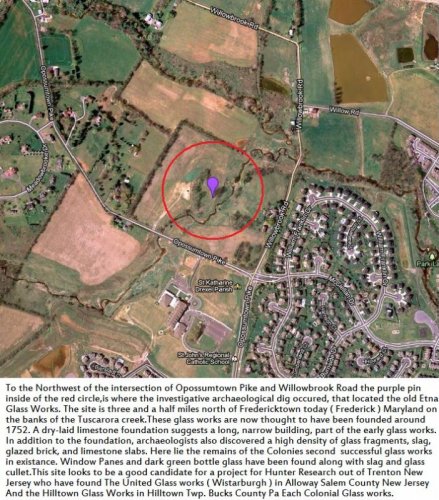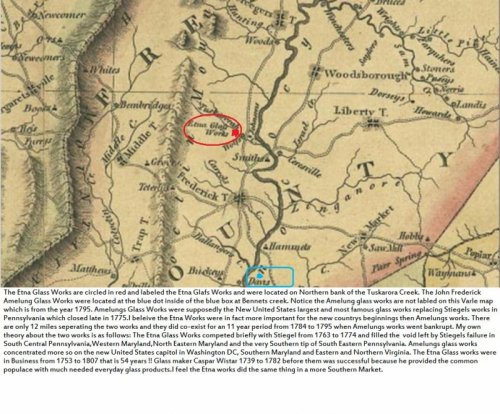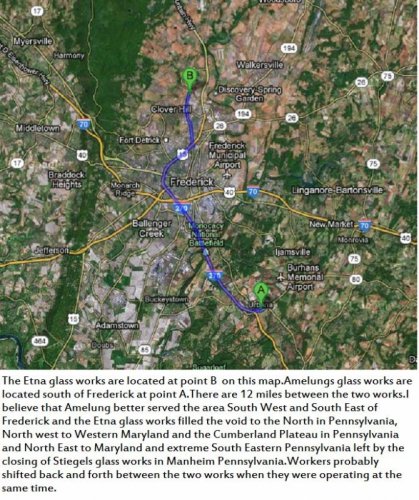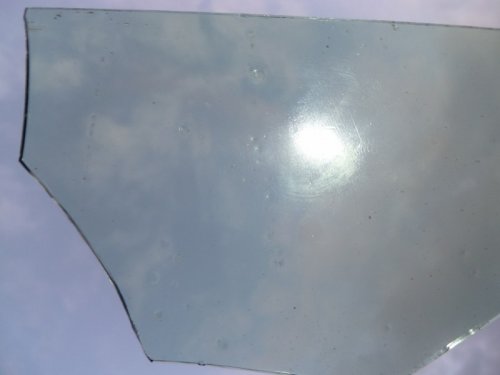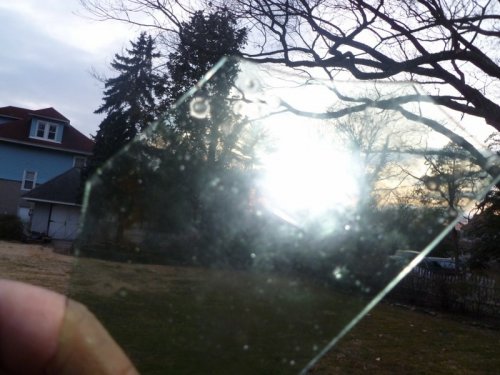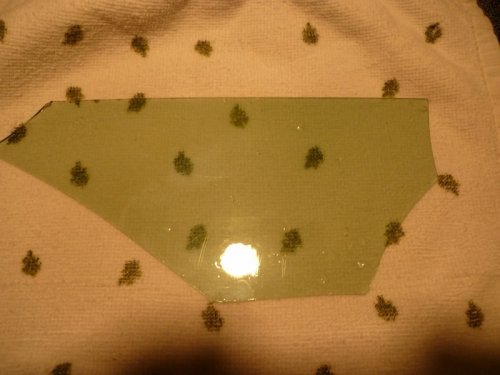Steve/sewell
Well-Known Member
- Joined
- Jan 23, 2010
- Messages
- 6,108
- Reaction score
- 5
- Points
- 0
Matt a.k.a. Guntherhess a.k.a. AntiqueMeds has sent me a beautiful large piece of a window glass shard and an accompanying smaller piece from his Colonial home in Frederick Maryland along with a glass book on English and Irish cut glass.Thank you Matt your generosity is most appreciated .I have a good idea as to where exactly Matt's Home is and he is only a short distance form Maryland's first glass works the Etna Glass Works. I also have a very strong suspicion that the glass he sent me was made here at the Etna glass works.Window glass was difficult to import into mountainous hilly and rough terrain and this area Matt lives in is all of the above.The color is American colonial yellow green seen often at all of the other colonial glass works in the Mid-Atlantic region.
The abundance of naturally occurring silica along with all of the other necessary ingredients to manufacture glass were all located quite locally to the glass works. The works themselves were located just North of present day Saint Johns Regional High School at the North Western side of the intersection of Opposumtown pike and Willowbrooke Road. Matt's Home looks to be about a two and a half miles in Driving distance from this site .There has been one archaeological dig at the site and a long foundation wall of the glass works was exposed along with large amounts of glass shards of green, and black and numerous amounts of window glass and bottles fragments. Matt can you tell me if the side of the road the glass works were located on has been developed like it is across the street.The Farm property may still be called the Stup-Staley farm. Matt from all of the research I have done the glass works look to be where I have it marked on the picture below according to tax records in Frederick. If you know differently could you please correct this map showing a more precise area as to where the works were located.

The abundance of naturally occurring silica along with all of the other necessary ingredients to manufacture glass were all located quite locally to the glass works. The works themselves were located just North of present day Saint Johns Regional High School at the North Western side of the intersection of Opposumtown pike and Willowbrooke Road. Matt's Home looks to be about a two and a half miles in Driving distance from this site .There has been one archaeological dig at the site and a long foundation wall of the glass works was exposed along with large amounts of glass shards of green, and black and numerous amounts of window glass and bottles fragments. Matt can you tell me if the side of the road the glass works were located on has been developed like it is across the street.The Farm property may still be called the Stup-Staley farm. Matt from all of the research I have done the glass works look to be where I have it marked on the picture below according to tax records in Frederick. If you know differently could you please correct this map showing a more precise area as to where the works were located.


